
Imago
NASCAR, Motorsport, USA Cup Practice Nov 8, 2024 Avondale, Arizona, USA NASCAR Cup Series driver Ryan Blaney 12 during practice for the NASCAR Championship race at Phoenix Raceway. Avondale Phoenix Raceway Arizona USA, EDITORIAL USE ONLY PUBLICATIONxINxGERxSUIxAUTxONLY Copyright: xMarkxJ.xRebilasx 20241108_mjr_su5_021

Imago
NASCAR, Motorsport, USA Cup Practice Nov 8, 2024 Avondale, Arizona, USA NASCAR Cup Series driver Ryan Blaney 12 during practice for the NASCAR Championship race at Phoenix Raceway. Avondale Phoenix Raceway Arizona USA, EDITORIAL USE ONLY PUBLICATIONxINxGERxSUIxAUTxONLY Copyright: xMarkxJ.xRebilasx 20241108_mjr_su5_021
When Ryan Blaney talks about racing at Daytona or Talladega, people listen. Known for his skill in the draft, Blaney has consistently positioned himself as a front-runner on NASCAR’s most treacherous superspeedways. Still, even for a driver of his caliber, the game has changed. In a recent conversation with Dale Earnhardt Jr., he admitted the harsh reality of Next-Gen cars at drafting tracks.
Watch What’s Trending Now!
The delicate art of pushing and being pushed, once instinctive, now demands near-perfect timing and absolute trust. For Blaney, navigating the chaos isn’t just about speed; it’s about surviving a car that resists comfort.
ADVERTISEMENT
Ryan Blaney pinpoints the reality of driving with the Next-Gen
Superspeedway racing has always thrived on trust and timing, but the arrival of the Next-Gen car has altered that equation in a way even veteran drivers still acknowledge. When Dale Earnhardt Jr. recalled testing the car at Daytona years ago, he described the experience as “uncomfortable,” a sentiment that resonated with what fans still see in races today. Packs move with unpredictability, bump drafts seem harder to sustain, and close-quarters racing often turns chaotic without warning. That’s the environment Ryan Blaney knows all too well, and in his own words, the cars have not truly improved.
“I don’t really think the cars have gotten a lot more comfortable. I think the drivers have just gotten used to it,” Blaney admitted during his discussion with Earnhardt Jr. on the Dale Jr download podcast. He detailed how the Next-Gen’s rounded rear bumpers make clean contact far more difficult than with the Gen 6. Simple physics means the trailing driver’s role is now critical, because an off-center push doesn’t just fail to generate momentum, it can quickly destabilize the lead car. As Blaney explained, this shift has redefined the art of drafting: “It’s way more uncomfortable than what this previous generation of car was like… so it’s really important to line up square, and you have to be… the rear car has so much responsibility now.”
This isn’t just theory; it’s central to why superspeedway strategy looks different since the car’s debut in 2022. Where once extended drafting trains could build massive runs, the new car often forces hesitation, patience, and micro-adjustments. Blaney himself emphasized how he times his pushes with care, sometimes dragging the brake to ease the contact instead of slamming into the bumper ahead. By contrast, when drivers fail to exercise that precision, the “guy in front’s got his hands full,” fighting to keep the car straight while maintaining speed.
ADVERTISEMENT
Ultimately, what Blaney described sounds more like a balancing act than flat-out racing. For drivers in the lead, it demands constant anticipation, eyes shifting from mirrors to spotter cues, bracing for the closing rate of the car behind. For pushers, it’s about mastering responsibility with zero room for sloppy execution. As Blaney summarized it best: “You gotta trust that guy behind you to push you… it’s definitely delicate.”
Top Stories
France Family’s ‘Financial Deception’ Spilled Out in the Open as RTA Memo Exposes the ‘49%’ Lie
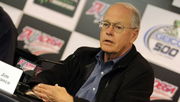
‘RIP’: NASCAR World Crumbles in Tears as 39-YO Former JR Motorsports Driver Passes Away
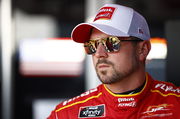
55-YO NASCAR Driver’s Untimely Death Shatters Racing Community
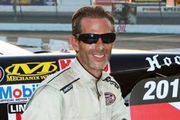
Dale Earnhardt & Tony Stewart Dethroned as SVG Shatters NASCAR Benchmark to Stand Alone in History
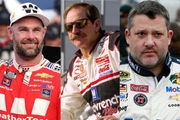
NASCAR President Kicks Up ‘SRX’ Firestorm With Courtroom Claim Fans Refuse to Accept
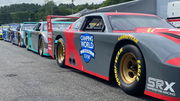
ADVERTISEMENT
Ryan Blaney’s mindset at Daytona and Talladega
For all the technical challenges that come with the Next-Gen car in the draft, Ryan Blaney believes his success on superspeedways stems from something deeper than just mechanical adjustment—it’s his mentality. Dale Earnhardt Jr. pointed out that Blaney has consistently kept himself in the conversation as one of the best at Daytona and Talladega, regardless of the car generation. Unlike past greats who often admitted outright frustration with these races, Blaney has learned to embrace what makes them unpredictable.
“Years ago, I just finally put my mind [to], hey… these speedway races… it is what it is,” Blaney explained. Crashes, bad breaks, and “crappy days” are inevitable, but he’s made peace with that randomness instead of letting it erode his confidence. “If it happens, it happens… you’ll move on and try to go again the next time.”
That acceptance has shifted into enjoyment of the unique style of pack racing. While others dread the razor-thin margins and destructive wrecks, Blaney views it as a challenge to be tackled with patience and discipline. He stressed the importance of resisting the temptation to take every run and instead allowing opportunities to develop naturally. For Blaney, keeping composure and avoiding desperation often pays off when the race inevitably splinters in its final laps.
ADVERTISEMENT
His growth into a top-tier superspeedway racer didn’t happen in isolation. Blaney credits learning from teammates and rivals Brad Keselowski, Joey Logano, Denny Hamlin, and even Earnhardt Jr. while developing his own patient approach. That ability to blend lessons with adaptability has proven critical, especially as the Next-Gen era forced even veterans to rethink strategies.
While he admits superspeedways may never be his outright favorite style, Blaney has chosen not to adopt the defeatist mindset voiced by legends like Mark Martin, who openly disliked the unpredictability of pack racing. Instead, he frames Daytona and Talladega as opportunities. “You’re kinda beating yourself before you get there if you hate it,” Blaney said bluntly. “So… even though maybe it’s not my favorite type, I’m going to go and try my best, and enjoy it the most I can.”
That mindset, combined with patience and skill at timing closing runs, has allowed Blaney to remain a fixture at the front of the pack when it matters most, none more evident than in his recent photo finish at Daytona, a reminder that mental strength is just as vital as mechanical advantage in conquering superspeedways.
ADVERTISEMENT
ADVERTISEMENT
ADVERTISEMENT
ADVERTISEMENT

